Online Class: Supporting Special Education Students Virtually and Remotely

-
15Lessons
-
22Exams &
Assignments -
5Hours
average time -
0.5CEUs
Course Description
In the evolving landscape of education, where digital innovation meets the intricate needs of special education, one truth stands clear: ensuring success for every student requires more than mere adaptation; it calls for a transformative commitment to individualized, inclusive learning. Welcome to "Supporting Special Education Students Virtually and Remotely," a course designed not just to educate but to inspire an entirely new approach to teaching that prioritizes the unique needs of every learner.
Imagine stepping into a world where cutting-edge technology connects seamlessly with deeply personalized education strategies. In this course, you won't just learn how to shift a classroom online. Instead, you'll delve into the depths of what virtual education means for special education and discover how to turn distance into an opportunity for unprecedented educational success.
The journey begins with leveraging the power of digital tools. Although technology might appear as just a collection of apps and platforms, you'll uncover how these can be crafted into powerful instruments that break down barriers and unlock potential. You'll explore the art of effective collaboration and communication, mastering these crucial skills to ensure that individualized education plans (IEPs) not only survive but thrive in a virtual setting.
Your adventure doesn't stop there. Dive into tech-driven teaching techniques that redefine what inclusivity looks like in a virtual classroom. This course reveals how fostering inclusive partnerships involves more than just involving families in meetings. It's about creating a vibrant community where every member—students, parents, teachers—feels heard and supported, regardless of their communication needs or preferences.
Then, you'll explore assistive technologies that give special education students a voice in remote learning settings, allowing them to fully engage and express their individual strengths. With practical applications like speech-to-text and customizable interfaces, the course empowers you to create environments where learning differences become opportunities rather than obstacles.
This course embraces the philosophy of Universal Design for Learning (UDL) to tackle learning gaps across virtual landscapes. You will be equipped with versatile educational strategies that celebrate individual progress, incorporating digital literacy to meet the ever-evolving demands of modern education. As you advance, you'll build valuable skills in creating digital pathways for learners, promoting not just knowledge acquisition but emotional resilience and social connection.
Perhaps most intriguing are the virtual assessments—stylized, interactive experiences that break the mold of traditional testing. Discover how gamified platforms can engage students' interests and transform assessments into dynamic learning journeys. With real-time feedback that aligns with each student's cognitive style, virtual assessments are revolutionized into tools of empowerment and growth.
At the heart of this course is a commitment to empower educators. You'll join a community of peers driven by a shared goal: to provide inclusive education tailored to the needs of students with special requirements. Through collaborative environments, forums, and webinars, you won't just exchange ideas; you'll cultivate a network of support that drives both individual and collective progress.
Moreover, you will master the complexities of IEPs and Behavioral Intervention Plans (BIPs) in the virtual space, ensuring that every aspect of your students' education is as adaptable and precise as possible. The course equips you with the knowledge to navigate the legal frameworks of IDEA and ADA, ensuring that equity, access, and privacy remain at the forefront of your remote teaching endeavors.
By completing this course, you are not only enhancing your professional capabilities; you are making a meaningful difference in the lives of students, their families, and your community. This course is your gateway to becoming a pioneering force in the future of special education, using virtual platforms to create a world where every student is seen, heard, and empowered.
Join us now on this transformative journey. The future of special education is not just about adapting to change; it's about leading it. Be the difference. Transform education, empower your students, and redefine what it means to teach and learn in a virtual world.
- Business
- Business Ethics Courses
- Harassment Prevention Courses
- Human Resources Certifications
- Management
- Aromatherapy Courses
- Caregiver Courses
- Career Development Courses
- Communications Courses
- Confidence and Self Esteem Courses
- Healing
- Human Anatomy Courses
- Medical Skills
- Health & Medicine
- Nutrition
- Marketing
- Microsoft Office Certification Courses
- Life Coaching Courses
- Self-Improvement
- Small Business Certifications
- Safety
- Writing Improvement
- Business Writing Courses
Course Lessons
Lesson 1. Leveraging Digital Tools for Individualized Education Success
 Review Practice Worksheet: Lesson-1-Activity-17378.pdf
Review Practice Worksheet: Lesson-1-Activity-17378.pdf Lesson discussions: Reasons for Taking this Course
Lesson discussions: Reasons for Taking this Course Assessment: Lesson 1 Review Exam
Assessment: Lesson 1 Review Exam
Lesson 2. Tech-Driven Teaching for Inclusive Classrooms
 Review Practice Worksheet: Lesson-2-Downloadable-17380.pdf
Review Practice Worksheet: Lesson-2-Downloadable-17380.pdf Assessment: Lesson 2 Review Exam
Assessment: Lesson 2 Review Exam
Lesson 3. Communicating Inclusively in Digital Special Education
 Review Practice Worksheet: Lesson-3-WorkSheet-17381.pdf
Review Practice Worksheet: Lesson-3-WorkSheet-17381.pdf Assessment: Lesson 3 Review Exam
Assessment: Lesson 3 Review Exam
Lesson 4. Harnessing Assistive Technologies in Remote Special Education: Tools and Techniques
 Review Practice Worksheet: Lesson-4-Activity-17383.pdf
Review Practice Worksheet: Lesson-4-Activity-17383.pdf Complete: Lesson 4 Activity
Complete: Lesson 4 Activity Assessment: Lesson 4 Review Exam
Assessment: Lesson 4 Review Exam
Lesson 5. Universal Design for Learning: Bridging Learning Gaps with Technology
 Review Practice Worksheet: Lesson-5-WordSearch-17385.pdf
Review Practice Worksheet: Lesson-5-WordSearch-17385.pdf Assessment: Lesson 5 Review Exam
Assessment: Lesson 5 Review Exam
Lesson 6. Creating Digital Pathways: Personalized Learning and Inclusivity
 Review Practice Worksheet: Lesson-6-WordSearch-17386.pdf
Review Practice Worksheet: Lesson-6-WordSearch-17386.pdf Complete: Lesson 6 Activity
Complete: Lesson 6 Activity Assessment: Lesson 6 Review Exam
Assessment: Lesson 6 Review Exam
Lesson 7. Navigating Special Education with Virtual Assessment: Crafting Unprecedented Learning Journeys
 Review Practice Worksheet: Lesson-7-Downloadable-17388.pdf
Review Practice Worksheet: Lesson-7-Downloadable-17388.pdf Complete: Lesson 7 Activity
Complete: Lesson 7 Activity Assessment: Lesson 7 Review Exam
Assessment: Lesson 7 Review Exam
Lesson 8. Empowering Educators in Virtual Special Education
 Review Practice Worksheet: Lesson-8-WordSearch-17389.pdf
Review Practice Worksheet: Lesson-8-WordSearch-17389.pdf Complete: Lesson 8 Activity
Complete: Lesson 8 Activity Assessment: Lesson 8 Review Exam
Assessment: Lesson 8 Review Exam
Lesson 9. Virtual Support Systems: A Guide to IEPs and BIPs
 Review Practice Worksheet: Lesson-9-Activity-17391.pdf
Review Practice Worksheet: Lesson-9-Activity-17391.pdf Complete: Lesson 9 Activity
Complete: Lesson 9 Activity Assessment: Lesson 9 Review Exam
Assessment: Lesson 9 Review Exam
Lesson 10. Empowering Students in Virtual Special Education Environments
 Review Practice Worksheet: Lesson-10-WordSearch-17393.pdf
Review Practice Worksheet: Lesson-10-WordSearch-17393.pdf Complete: Lesson 10 Activity
Complete: Lesson 10 Activity Assessment: Lesson 10 Review Exam
Assessment: Lesson 10 Review Exam
Lesson 11. Tailored Virtual Solutions for Special Education
 Review Practice Worksheet: Lesson-11-WorkSheet-17394.pdf
Review Practice Worksheet: Lesson-11-WorkSheet-17394.pdf Complete: Lesson 11 Activity
Complete: Lesson 11 Activity Assessment: Lesson 11 Review Exam
Assessment: Lesson 11 Review Exam
Lesson 12. Navigating Sensory Processing Challenges in Virtual Learning
 Review Practice Worksheet: Lesson-12-Downloadable-17395.pdf
Review Practice Worksheet: Lesson-12-Downloadable-17395.pdf Assessment: Lesson 12 Review Exam
Assessment: Lesson 12 Review Exam
Lesson 13. Mastering Virtual Special Education: Strategies and Technologies
 Review Practice Worksheet: Lesson-13-Activity-17396.pdf
Review Practice Worksheet: Lesson-13-Activity-17396.pdf Assessment: Lesson 13 Review Exam
Assessment: Lesson 13 Review Exam
Lesson 14. Balancing Privacy, Equity, and Access in Remote Learning
 Review Practice Worksheet: Lesson-14-Activity-17398.pdf
Review Practice Worksheet: Lesson-14-Activity-17398.pdf Assessment: Lesson 14 Review Exam
Assessment: Lesson 14 Review Exam
Lesson 15. Empowering Educators: Navigating Special Education with Technology
 Review Practice Worksheet: Lesson-15-HomeWork-17401.pdf
Review Practice Worksheet: Lesson-15-HomeWork-17401.pdf Lesson discussions: End of Course Poll; Course Comments
Lesson discussions: End of Course Poll; Course Comments Assessment: Lesson 15 Review Exam
Assessment: Lesson 15 Review Exam
Learning Outcomes
- Demonstrate an understanding of the core components of an IEP and apply strategies to adapt them to a virtual learning environment.
- Identify and utilize digital tools and assistive technologies to support the implementation of IEPs effectively in an online education setting.
- Analyze data from educational software to adjust teaching strategies and better align with the evolving needs of special education students.
- Demonstrate the ability to select appropriate technological tools to support and achieve specific IEP goals for special education students.
- Demonstrate the ability to identify and apply effective communication strategies that accommodate diverse communication preferences of families in special education.
- Recognize and implement assistive technologies and universal design principles to create inclusive, accessible virtual learning environments for students with special needs.
- Describe how assistive technology tools like screen readers and text-to-speech software enhance accessibility and engagement for students with disabilities in a virtual learning environment.
- Identify specific benefits of communication apps in improving interaction and communication skills among special education students during remote education sessions.
- Demonstrate how assistive technology can be integrated into lesson plans to support diverse learning needs and improve student outcomes.
- Identify specific strategies for implementing Universal Design for Learning (UDL) in virtual classrooms to enhance student engagement and accessibility.
- Demonstrate the ability to apply assistive technology tools, such as text-to-speech and speech recognition software, to customize and enhance learning experiences for special education students in a virtual environment.
- Develop personalized learning plans utilizing SMART goals to address individual student needs, integrating socio-emotional strategies to support holistic development and continuous growth in a virtual setting.
- Identify and select appropriate virtual assessment tools that align with diverse learning needs and styles, ensuring inclusivity and engagement in special education.
- Demonstrate mastery of lesson content at levels of 70% or higher.
Additional Course Information

- Document Your Lifelong Learning Achievements
- Earn an Official Certificate Documenting Course Hours and CEUs
- Verify Your Certificate with a Unique Serial Number Online
- View and Share Your Certificate Online or Download/Print as PDF
- Display Your Certificate on Your Resume and Promote Your Achievements Using Social Media

Related Courses
-
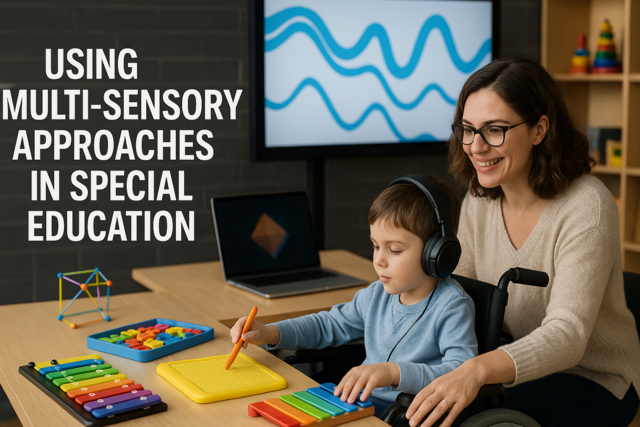 7 hours
0.7 CEUs
Using Multi-Sensory Approaches in Special Education
+ More Info
7 hours
0.7 CEUs
Using Multi-Sensory Approaches in Special Education
+ More Info
-
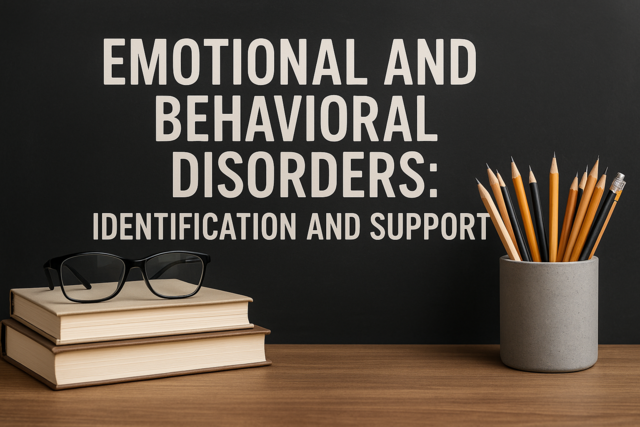 7 hours
0.7 CEUs
Emotional and Behavioral Disorders: Identification and Support
+ More Info
7 hours
0.7 CEUs
Emotional and Behavioral Disorders: Identification and Support
+ More Info
-
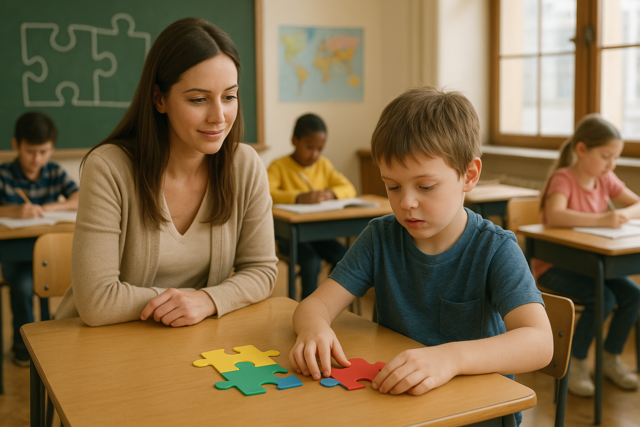 3 hours
0.3 CEUs
Understanding Autism Spectrum Disorders in the Classroom
+ More Info
3 hours
0.3 CEUs
Understanding Autism Spectrum Disorders in the Classroom
+ More Info
-
 7 hours
0.7 CEUs
Family Engagement and Support Strategies in Special Education
+ More Info
7 hours
0.7 CEUs
Family Engagement and Support Strategies in Special Education
+ More Info
-
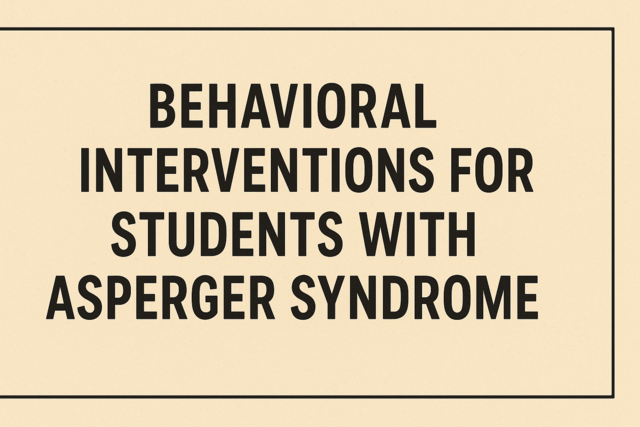 4 hours
0.4 CEUs
Behavioral Interventions for Students with Asperger Syndrome
+ More Info
4 hours
0.4 CEUs
Behavioral Interventions for Students with Asperger Syndrome
+ More Info
-
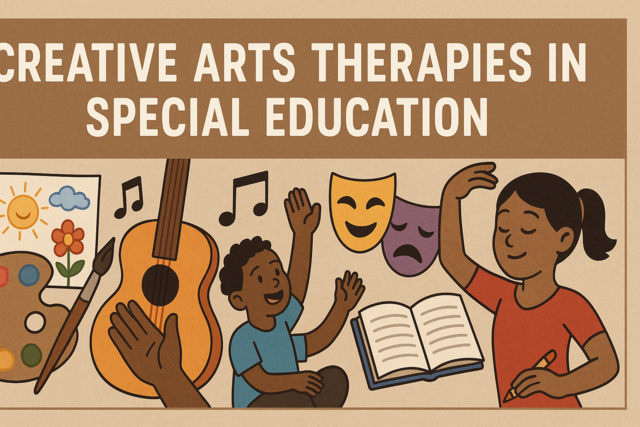 3 hours
0.3 CEUs
Creative Arts Therapies in Special Education
+ More Info
3 hours
0.3 CEUs
Creative Arts Therapies in Special Education
+ More Info
-
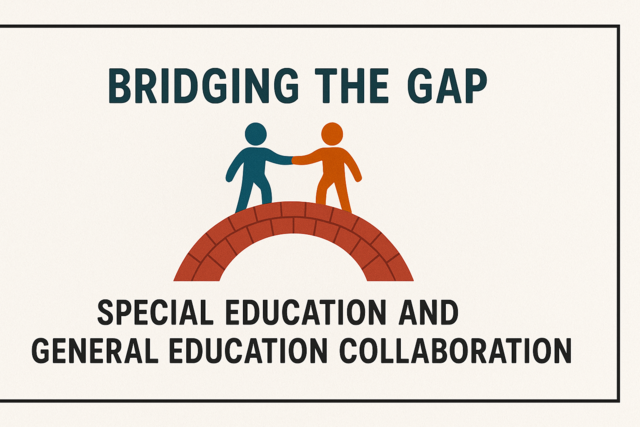 4 hours
0.4 CEUs
Bridging the Gap: Special Education and General Education Collaboration
+ More Info
4 hours
0.4 CEUs
Bridging the Gap: Special Education and General Education Collaboration
+ More Info
-
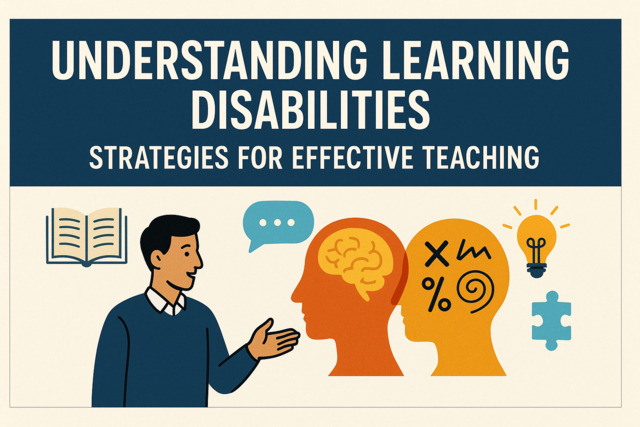 7 hours
0.7 CEUs
Understanding Learning Disabilities: Strategies for Effective Teaching
+ More Info
7 hours
0.7 CEUs
Understanding Learning Disabilities: Strategies for Effective Teaching
+ More Info
-
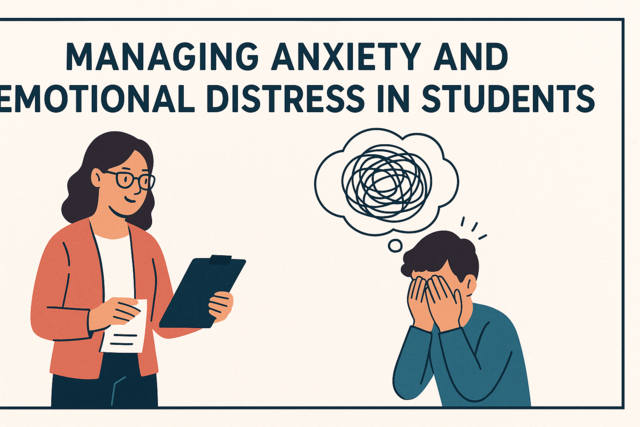 6 hours
0.6 CEUs
Managing Anxiety and Emotional Distress in Students
+ More Info
6 hours
0.6 CEUs
Managing Anxiety and Emotional Distress in Students
+ More Info
-
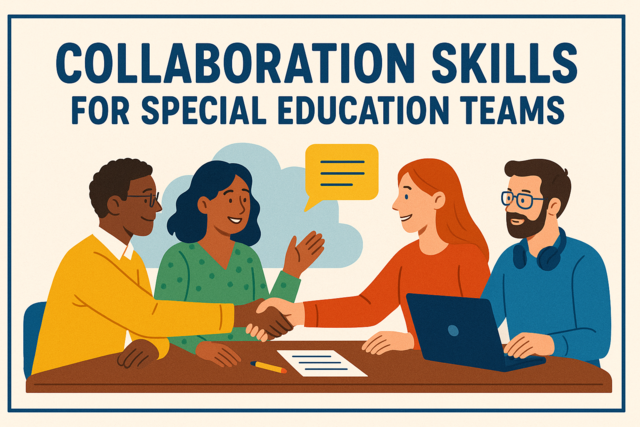 4 hours
0.4 CEUs
Collaboration Skills for Special Education Teams
+ More Info
4 hours
0.4 CEUs
Collaboration Skills for Special Education Teams
+ More Info




